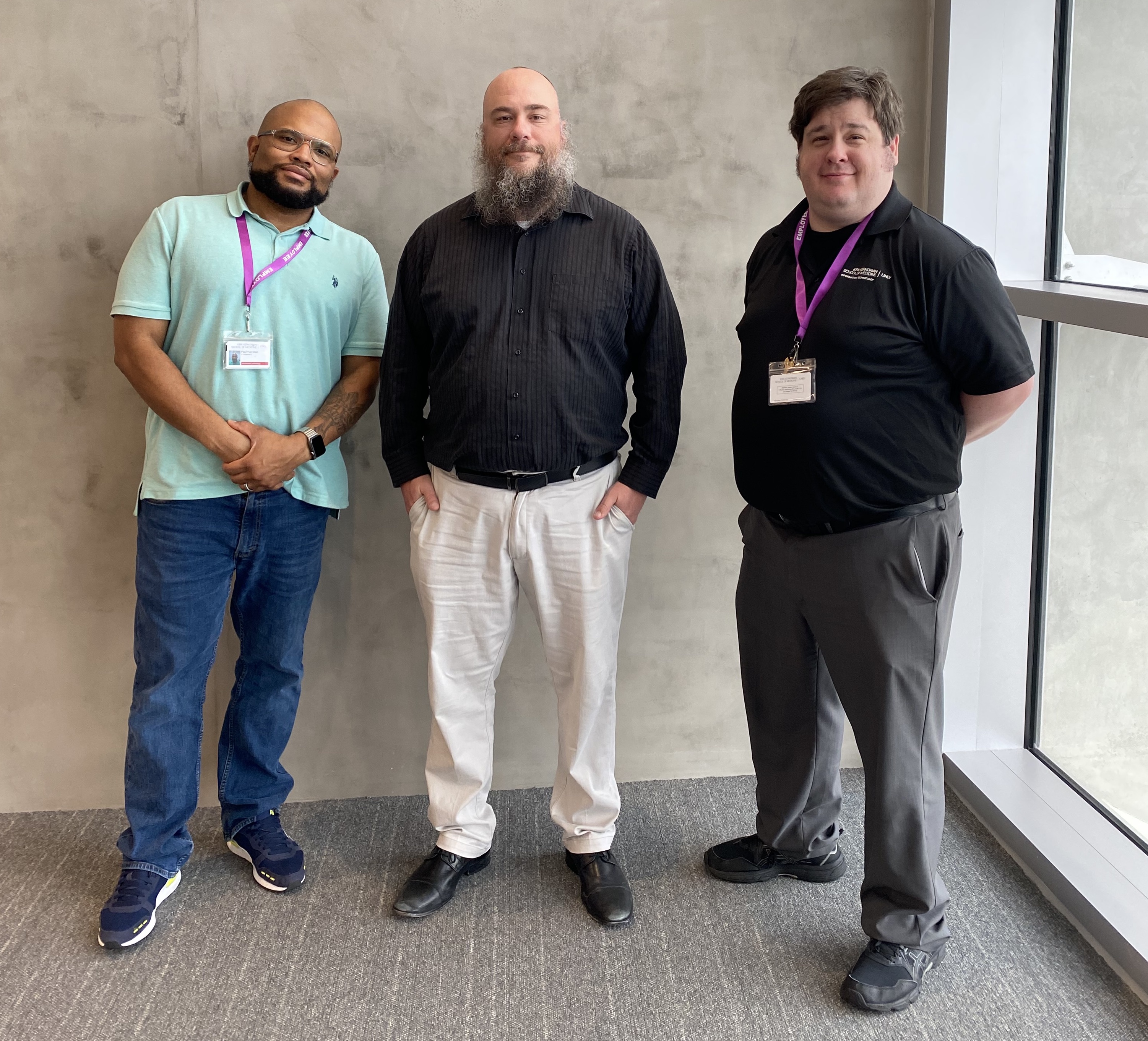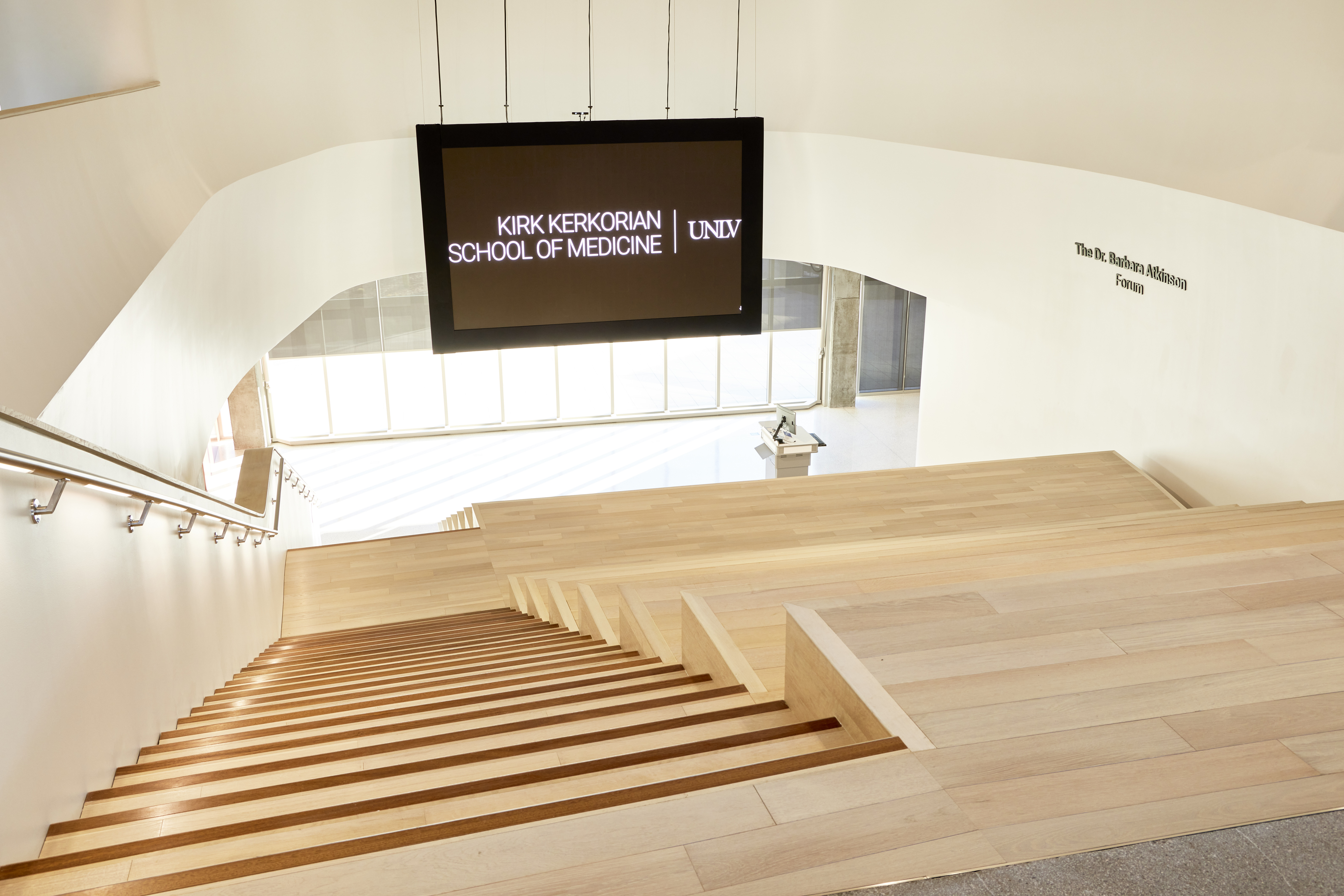
AV/IT TEAM: James King, assistant director of AV Services; Paul Hairston, IT tech 4; Christopher Kauppi, IT tech 4; 10 student workers
GOALS: The ultimate goal of the University of Nevada, Las Vegas (UNLV) Kirk Kerkorian School of Medicine is to provide students with the highest-quality medical education, leveraging state-of-the-art technology, low- and high-fidelity simulation, live standardized patient actors, and both virtual and cadaveric anatomy and dissection. The Medical Education Building supports the ability to grow the School of Medicine from 60 students per class up to 120 students per class.
CHALLENGES: Not only did supply chain issues arise during the upgrade, but the AV/IT team itself underwent a transformation. Six months before the opening of the Medical Education Building, the AV Services team was formed to support the AV needs of the School of Medicine. The team had to quickly get up to speed on the AV technology being used in the build.



Crestron NVX360, Crestron NVX350C, BIAMP Devo, BIAMP Tesira; Sennheiser TCC2, Sennheiser microphones, Vaddio RoboFLIP, Vaddio RoboShot 30E, Crestron ceiling speakers, Sharp NEC displays ranging from 32 to 75 inches, Sharp NEC NP-PA703, Sharp NEC NP-PX1004, Visix DMP, Visix E74, YahamLED video wall, Logitech Meetup
FINAL INSTALL/USER BENEFITS: The Medical Education Building allows the school of medicine to provide top-tier medical education by providing the latest in technology. The Medical Education Building includes two large learning studios that can support class sizes up to 120 students. The learning studios provide flexibility in room configuration and allow the instructor to choose between teaching in the round, or from a more traditional lectern at the front of the room. Beside the two large spaces, there are 23 small group rooms and six medium classrooms that allow students to work in groups as they solve problems. There are also many one- to four-person study/huddle spaces spread out between the floors. The first floor of the Medical Education Building also houses spaces for anatomy, clinical skills, and a simulation center. There are standardized patient exam rooms that allow students to interact with patients, played by live actors. These rooms are recorded and monitored from a central control room. There is also a simulation surgery room and three mock exam rooms.







